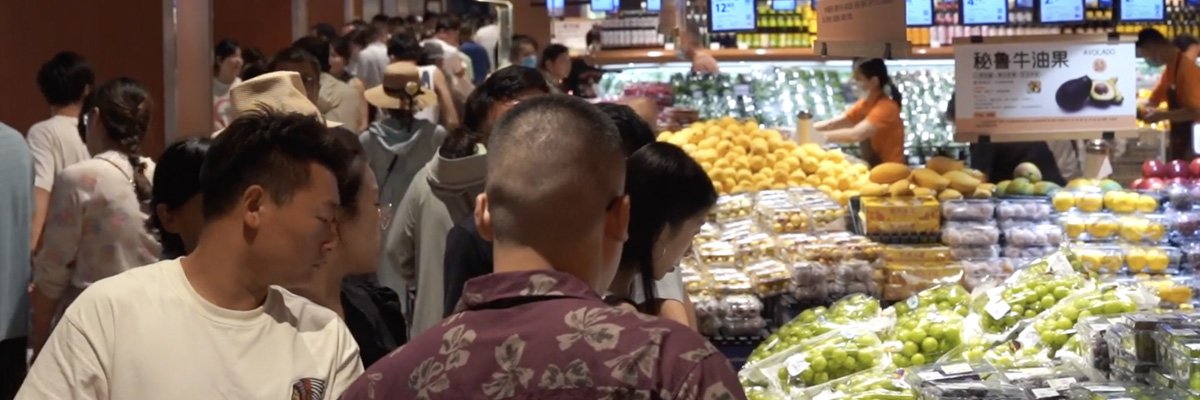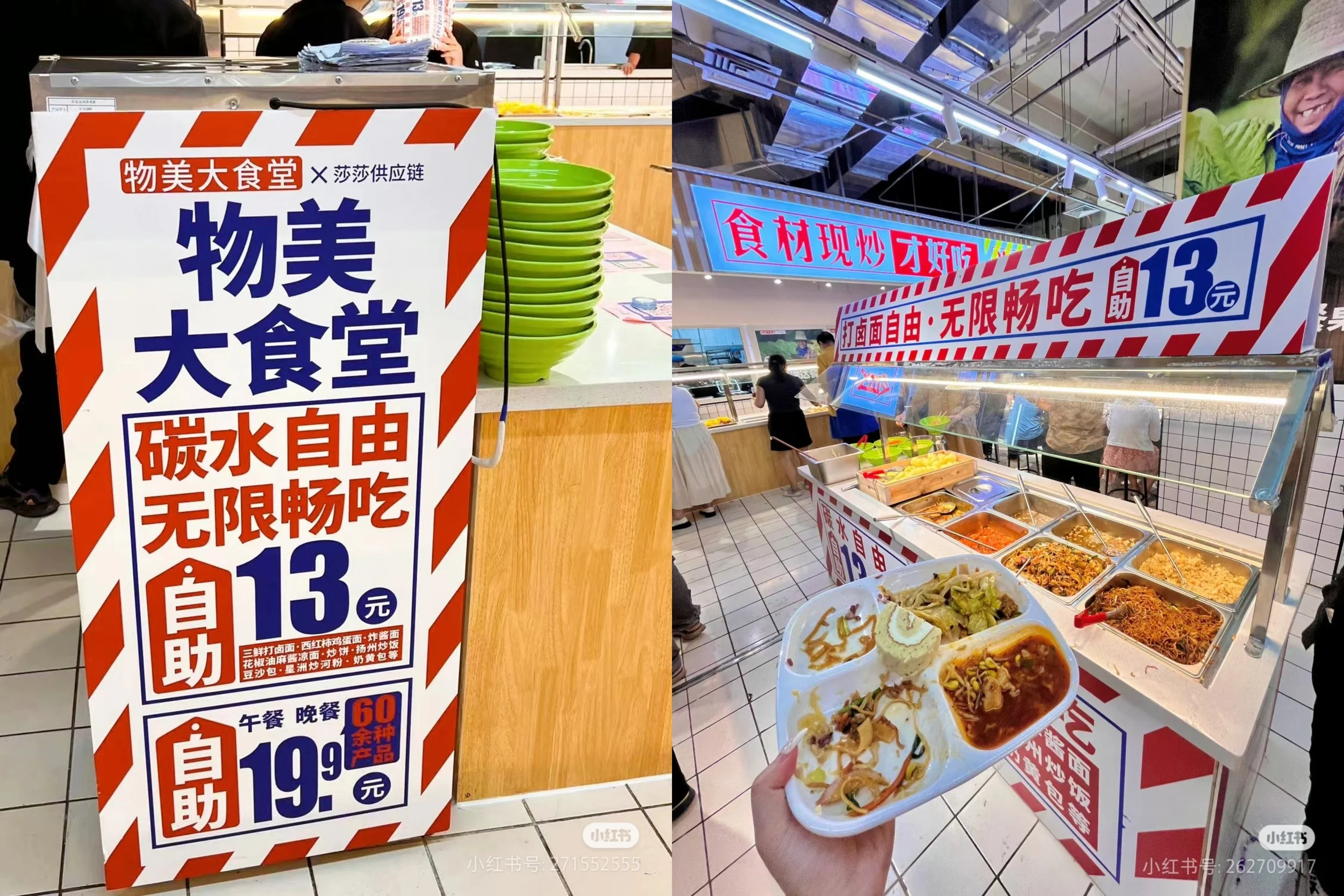How a lower-tier grocer Pangdonglai is rewriting Chinese retail rules

One of the most talked-about phenomena in China’s contested retail segment is seeing executives from across the country travelling to its stores to learn from its successes. It isn’t a glitzy new experience centre based in one of China’s megacities, but a 29-year old supermarket chain, Pangdonglai (PDL). It started in a fourth tier city and has just 13 stores, all in central China’s Henan province.
Many of China’s largest retail chains are taking notice. Walmart is studying it, and no. 2 supermarket chain, Yonghui, is remodelling its stores based on PDL’s model. A Yonghui supermarket in Zhengzhou refreshed with help from PDL saw average daily sales soar 12-times higher within a month of reopening.
As traditional brick & mortar retailers continue to be outgrown by the dynamic, convenient and cheap online shopping platforms, PDL is “rewriting the rules of retail in China”. It isn’t winning by incorporating shiny, pioneering tech; but by offering things that can’t be replicated when shopping online.
PDL’s secret sauce is about doing the good old fashioned basics really well. It is highly regarded for its integrity, trust and fabulously authentic customer service.
At the heart of providing exceptional customer service, PDL ensures that its staff are genuinely happy, which permeates through to every contact with customers. It has recognised the trend of China’s growing mental health concerns, driven by China’s all-too-common 996-type work culture (9am-9pm-6 days a week). 39% of employees in China reportedly have a high risk of developing mental health issues.
Staff at PDL work 7-hour days, have weekends off, get a string of perks and are entitled to 30-40 days of annual leave. PDL’s average salary is ¥7,000 ($970) a month, versus China’s average retail salary of ¥3,566 in 2019. The company became famous in March for giving staff 10 days of ‘unhappy leave’ to support emotional wellness, a policy that resonated with many urban professionals and went viral across the country.
The policies have created an authentically happy workplace, which rubs off with every contact that shoppers have with staff. They have also helped bolster PDL’s reputation for its integrity.
In addition to mental health, PDL has adapted to other trends such as Chinese consumers’ love for their pets, providing rest areas for furry friends, dedicated pet water and cooling devices. China’s ballooning elderly opportunity is supported with magnifying glasses on shopping carts to help them read labels. Not to leave out the mobile-crazy youth, all stores provide free smartphone chargers.
In its spacious isles, PDL offers exclusive products, such as its Internet-famous own-branded craft beers and desserts. Its groceries have a reputation for being good quality, safe and hygienic, which are symbolized in its crystal-clear fish tanks. It doesn’t run for cover if it gets caught out for its products not being up to scratch. After a shopper posted about the unsanitary production of its rolling dough dish on Douyin, they were rewarded ¥100,000 yuan ($14K), and every customer who bought the dish was given ¥1,000 ($140) – a noticeably generous compensation which turned a would-be crisis into a brand building event, albeit an expensive one.
Pangdonglai’s success is a classic example of China’s tribal shopping traits. Its customer service, quality and integrity are the talk of the town online, which further enhances its allure as everyone wants to be a part of it.
As many brands’ marketing strategies in China are focused around price wars, PDL is charging a premium for higher quality products and a nicer experience in stores, and doing very well as a result. Although the model hasn’t yet been stress-tested on scale, it is a nice reminder that good old fashioned retail can be lucrative when the basics are done well, and relevant trends are supported.
Luxury brands such as Burberry, Gucci, and Armani are selling heavily-reduced products at bulk warehouse Sam's Club - what does it mean for the brands?
China's Special Action Plan for Boosting Consumption is a positive for foreign brands in China, but there remain some challenges
Jack Ma launched New Retail with a roar in 2016 starting a scramble for the New Retail crown on both sides of the Pacific. The buzzword has since fizzled out and Alibaba has divested in much of its bricks & mortar retail properties, but the need to rethink retail is more important than ever. Here's why...
Despite being winter, Naimi's novel fried chicken-looking ice creams are flying out of the chiller. Their success provides many valuable lessons for brands selling in China
Xianyu's foray into physical retail illustrates five key lessons for retailers - both online and office - in how to differentiate and engage your target audience
MINISO has launched MINISO LAND, attracting massive crowds. Its first global “IP theme park-style” flagship blends globally- known IPs into an immersive shopping experience.
Social media feeds increasing filled with “rough life” posts, alongside the popularity of more authentic retail spaces are just two examples of how Chinese consumers are seeking more real, less polished marketing
China is experiencing a shift—or even a dilemma—in its bricks-and-mortar retail landscape. While high-end malls are seeing declines, non-standard commercial spaces are on the rise. Among these, Beijing’s THE BOX Youth Energy Center is redefining the offline retail experience by tapping into the spending power of the younger generation.
China's consumer landscape is increasingly divergent. Lower-tier cities are rebounding faster and showing greater resilience than first- and second-tier cities. While large catering businesses struggle, smaller restaurants thrive. How can brands understand these diverging trends and their implications? Read on to find out more.
Beijing's total package for stimulus this year may be its largest yet in nominal terms, but how will it impact the all-important consumption segment?
Zara's pop up in Shanghai's trendy Anfu Lu provides plenty of lessons on marketing and retail for brands in China
Zara's Anfu Lu pop-up store in Shanghai's former French concession is being reinvented every week; here are photos of the first two iterations
Luxury consumer behaviour in China is returning to pre-pandemic traits.
Pangdonglai is rewriting the rules of retail in China, but not through a shiny new tech-based model
Traditional supermarket chains in China are struggling due to the intense competition from e-commerce. As consumer shopping and dining habits shift, these supermarkets are turning to in-store dining areas or large canteens to stay in business.
This summer, many brands have started to introduce ice cup products to attract more consumers.
As offline stores shift back towards offering engaging experiences, foreign brands’ retail spaces have been renovated in Shanghai. Gentle Monster, ARCTERYX and FREITAG are 3 cases you can't miss!
China big ecommerce festivals act as a barometer for consumer sentiment, but this year’s 618 also provides wider lessons into what is working with Chinese consumers right now
The frenzied opening of Costco's seventh store in China illustrates Chinese consumers' interest in the retailer, but their work remains cut out for them
China’s consumer data points to some interesting developments that will impact tourism behaviour internationally
Flea markets have become trendy hot spots in Shanghai, with some tapping into the rise of pre-loved goods. From tranquil forest-themed to hidden gems, here are some of our favourite flea markets in the city
DAPHNE was a staple fashion item for Chinese ladies born in the 80s and 90s, but failed to adapt to changing market dynamics. A recent strategic shift and refresh has seen the brand rise from the dead
Young Chinese are leaving China’s megacities for smaller cities, and bringing their sophisticated habits with them. Yet beyond the hype, how is this playing out for business opportunities?
Shanghai’s retail market is unrivalled in China for both size and dynamism, supported by China’s most sophisticated consumers meaning that the city is at the forefront of consumer trends
China's shopping malls have evolved to be experience centres unlike anywhere else in the world. Here is some advice to ensure that marketing strategies factor in this uniqueness
Current Chinese consumer behaviour currently varies by category, but the medium-term outlook is very positive for a number of reasons
Don't underestimate the importance of bricks & mortar touch points in China, and ensure they are integrated and optimised for consumer needs
The best performing brands in China all have an uncompromising use of data to steer opportunity analysis, marketing and NPD decisions.
An omni-channel approach, adapting data-led insights and optimising sales structures are areas foreign brands are falling behind in China





























KFC's marketing success and then threatened boycotts provide valuable insights about marketing in China